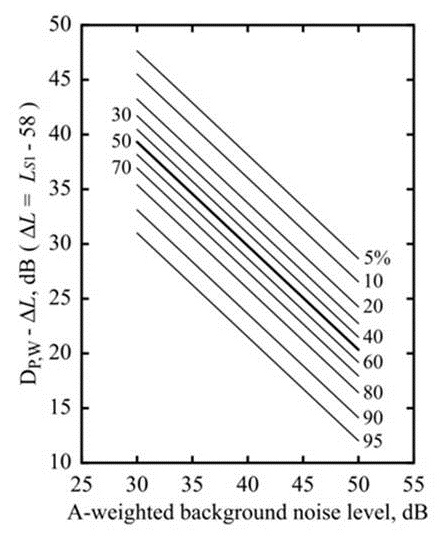
Hayato Sato - hayato@kobe-u.ac.jp
Masayuki Morimoto
Yasuhiko Odagawa
Environmental Acoustics Laboratory, Graduate School of Engineering, Kobe University
Rokko, Nada, Kobe 657-8501, JAPAN
Yasushi Hoshino
Environmental Acoustics Laboratory, Graduate School of Engineering, Kobe University
Rokko, Nada, Kobe 657-8501, JAPAN
Nippon Sheet Glass Environment Amenity Co. Ltd.
Takanawa, Minato, Tokyo 108-0074, JAPAN
Popular Version of Paper 2pAAa1
Presented Tuesday afternoon, May 15, 2012
163rd ASA Meeting, Hong Kong
The terms of "speech privacy" or "speech security" are often used for the topic of quantifying leakages of confidential speech in rooms such as consulting rooms in banks, hospitals and pharmacies, meeting rooms in offices, and so on. For example, Figure 1 shows a schematic section of two adjacent rooms in a hospital. In a consulting room, a doctor and a patient are talking about something confidential, while another patient is sitting in a waiting room. If the wall between the two rooms is thin and lightweight, or the waiting room is quiet, or conversation between the doctor and the patient is loud, the patient in the waiting room can hear conversation transmitted through the wall, whether he/she likes it or not. Especially in Japan, doctors often make a medical interview in open-plan offices shielded by partitions visually, but almost not aurally. In the case the patient in the waiting room is sensitive about leakages of personal information, the patient is stressed and thinks about finding another hospital. It is important to evaluate the degree of the leakages for acoustic design of such rooms.
 |
Figure 1. An example of information leakages by conversation in hospitals |
To evaluate the degree of information leakages by conversation, speech intelligibility scores have been used in studies about speech privacy. Speech intelligibility scores are the percentages of test speech signals correctly dictated by listeners. From the viewpoint of evaluation of speech privacy performance, the higher speech intelligibility scores is, the lower speech privacy performance is. Because speech intelligibility scores are strongly affected by speech-to-noise ratio, that is, the difference between sound pressure level of speech and that of background noise, background noise level and sound insulation performance are important variables in speech privacy design of rooms.
Figure 2 shows equal-intelligibility contours suggested in our previous study. The x-axis represents A-weighted background noise level at the position of the patient in the waiting room. The y-axis represents sound insulation performance of the wall with consideration of change in speech level at the position of the patient in the consulting room (LS1). The sound insulation performance is represented by DP,W*. The higher value of DP,W is, the higher sound insulation performance is. Meanwhile, if conversation in the consulting room becomes louder, speech level at the position of the patient in the next room becomes louder too. In other words, an increase in LS1 can be replaced with a decrease of the sound insulation performance. In this chart, the apparent sound insulation performance decreases when LS1 exceeds 58 dB. Falling diagonal strokes from top left to bottom right represent word intelligibility scores. Any sound fields with combinations of the apparent sound insulation performance and A-weighted background noise level on the same stroke yield the identical word intelligibility score. For example, when DP,W is 30 dB, A-weighted background noise level is 40 dB, and LS1 is 58 dB, the word intelligibility score is 50%. If the score is desired to be reduced to 10%, DP,W should be increased to 36 dB, or A-weighted background noise level should be increased to 46 dB. In this way, we can design speech privacy performance using this chart.
 |
Figure 2. Equal-intelligibility contours as a function of DP,W and A-weighted background noise level. LS1 is the speech level at the position of the patient in the consulting room (see Fig. 1) |
However, in our previous study, no reverberation sound was added to speech stimuli. In the present study, word intelligibility tests in reverberant sound fields were performed to clarify the effect of reverberation sound on speech privacy performance in two adjacent rooms. Figure 3 shows the results of the intelligibility tests. The word intelligibility scores decreased with decreasing the speech transmission index (STI)** calculated for each reverberant sound field without considering background noise, even if speech-to-noise ratio was constant. Furthermore, a multiple regression analysis indicated that a decrease in STI of 0.1 can be replaced with an increase in A-weighted background noise level about 3 dB from the viewpoint of prediction of word intelligibility scores. In conclusion, the chart shown in Figure 2 would be applicable to reverberant sound fields if A-weighted background noise level be corrected using STI.
 |
Figure 3. Z-scores of word intelligibility scores as a function of speech-to-noise ratio. Different symbols represent different reverberation conditions. The z-scores of 0.0, 1.0, and 2.0 are corresponding to the word intelligibility scores of 50%, 84%, and 98%, respectively. |
*DP means the level difference between particular positions in each room. The subscript W means that the weighting method for weighted sound reduction index (RW) defined in the ISO 717-1 standard is applied to reduce values of DP for five octave bands to single number.
**The speech transmission index (STI) is a popular objective measure for speech intelligibility scores defined in the IEC 60268-16.